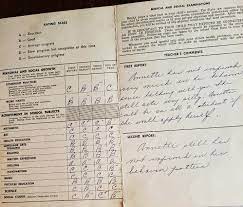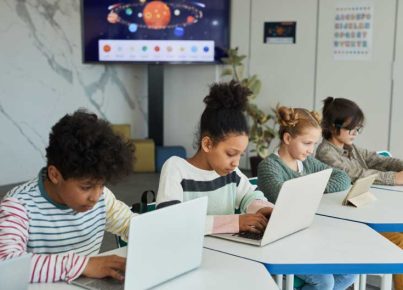The days of eagerly or anxiously awaiting a paper report card are perhaps long gone in many educational systems around the world. Report cards, the traditional method of communicating a student’s academic achievement to parents, have evolved significantly over the years. From handwritten remarks to digital dashboards, this vital link between school performance and home has seen a gradual but profound transformation.
In the past, report cards were simple documents created by teachers at the end of a term. They often included a list of subjects and a corresponding letter grade or percentage that reflected the student’s performance. Narratives provided by teachers, if any, were short and focused primarily on academic achievement and attendance. They served as a formal record, indicating where a student thrived and where improvement was needed.
These physical report cards had their charm but also limitations. Parents would see their child’s progress only at set intervals, typically quarterly or semi-annually, missing out on the ongoing nature of their child’s development. Additionally, they weren’t the most environmentally friendly option considering the amount of paper used in their production.
Fast forward to today’s digital age, and we witness an entirely new approach to reporting education outcomes. Contemporary report cards have taken on various digital forms such as online grading systems and parent portals integrated with real-time updates. These platforms offer detailed insights into a student’s performance that include not just grades but also attendance records, behavior assessments, teacher’s comments, and sometimes even examples of student’s work.
These modern report cards enhance parent-teacher communication dramatically since they allow for timely feedback. Parents can log in whenever they wish to check on their child’s progress rather than waiting for a scheduled report card release. This leads to more collaborative strategies for addressing academic or behavioral issues as they emerge rather than at term’s end.
Moreover, the digitization of report cards makes them more accessible to students as well. This way, students can take charge of their own learning by tracking their progress over time. It encourages them to reflect on their areas for growth and set goals accordingly—fostering autonomy and self-regulation.
The 21st-century report card supports a more holistic view of student achievement that encompasses co-curricular activities and social-emotional learning competencies alongside traditional academic metrics. They offer customizable experiences; some schools even involve students in the creation of their own report cards—promoting deeper engagement with their learning journey.
Amid these technological leaps, some challenges persist—accessibility can be an issue for families without reliable internet or devices at home. For educators, time management becomes crucial; constant updates require diligence and can be taxing alongside teaching duties.
From inkwells to keyboards, from paper stacks to cloud storage—the evolution of report cards reflects larger changes in our values and practices around education. They’re no longer just static sheets recording past accomplishments; they’ve become dynamic tools engaging multiple stakeholders in an ongoing dialogue about student growth—demonstrating how adaptability and innovation continue to define our approach to assessing educational achievement through time.





